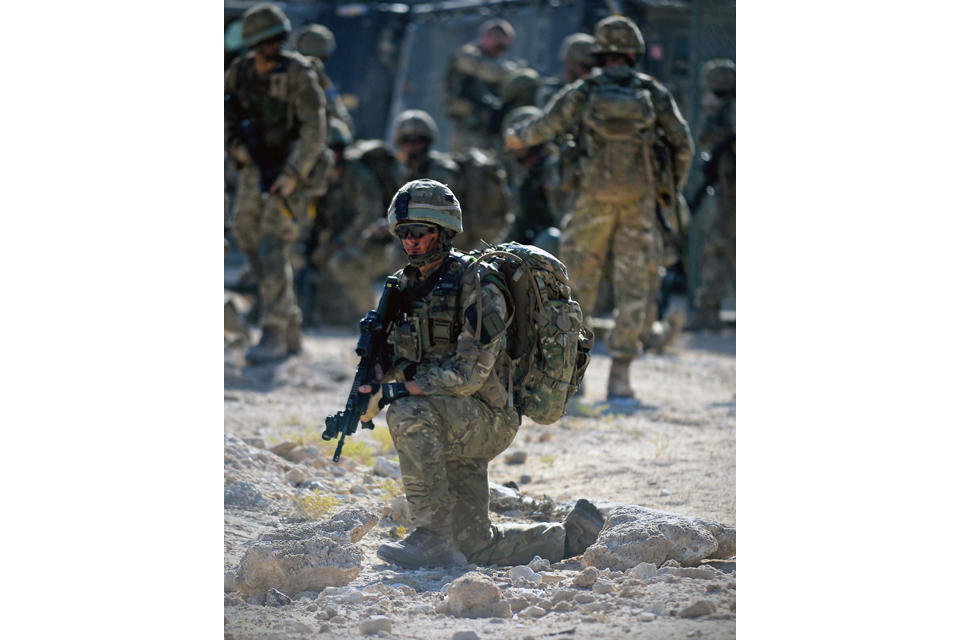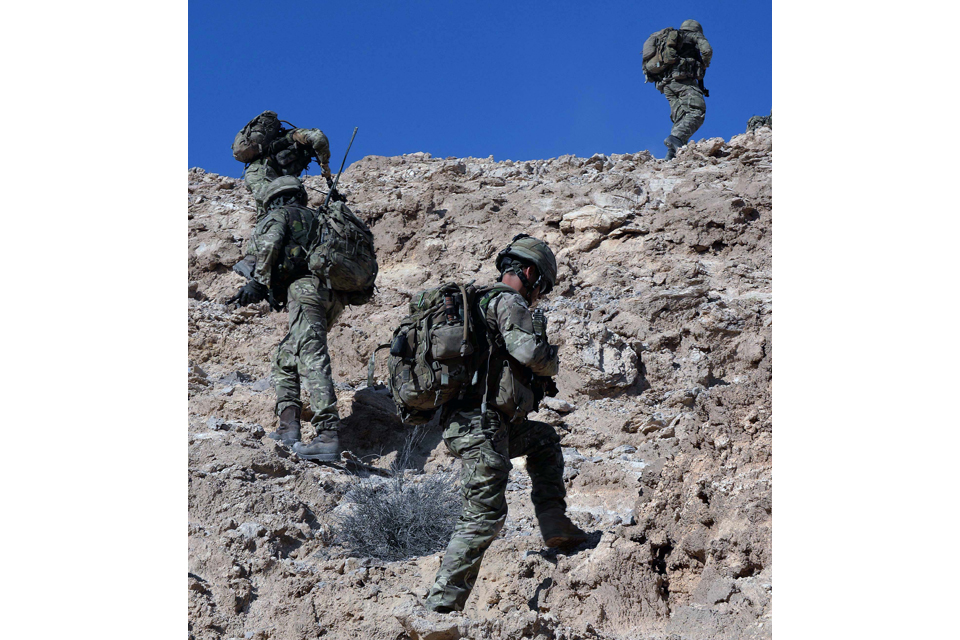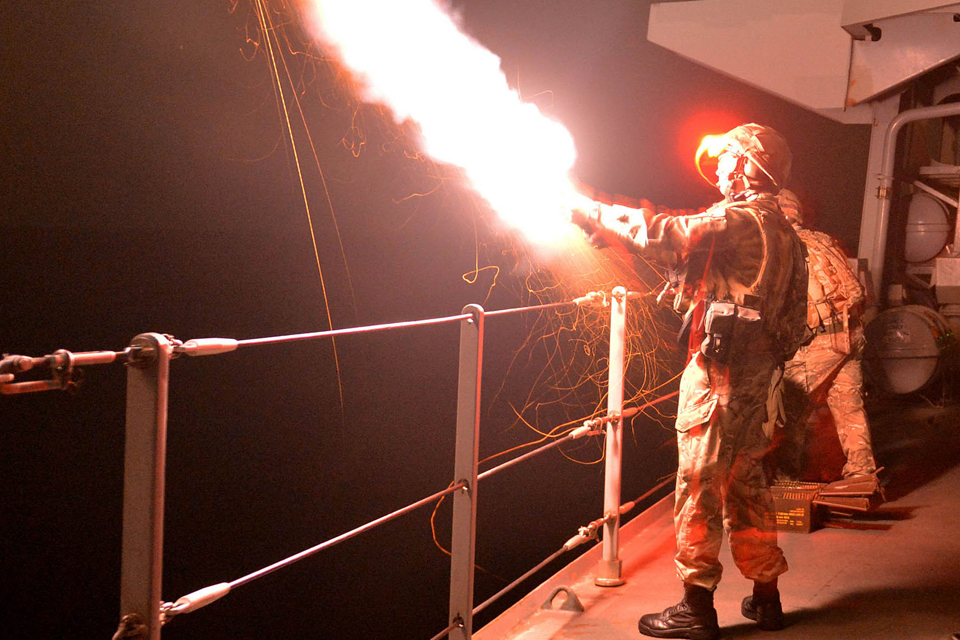Royal Navy sharpens claws for Exercise Omani Cougar
The Royal Navy and Royal Marines are putting all their core war-fighting skills to the test as they launch into Exercise Omani Cougar.
![Personnel manning HMS Bulwark's operations room as the ship comes under simulated attack [Picture: Leading Airman (Photographer) Arron Hoare, Crown copyright]](https://assets.publishing.service.gov.uk/media/5a62127ce5274a0a3ad909bc/s300_MT130109005G.jpg)
Personnel manning HMS Bulwark's operations room
Omani Cougar is the fourth major exercise of the ongoing Cougar 13 deployment, and the UK personnel are facing an intense 6 days working alongside the Royal Navy of Oman (RNO).
Royal Marines from Juliet Company of 42 Commando have been practising their live firing skills and urban combat training in Oman while Royal Navy ships HMS Bulwark and HMS Illustrious are holding maritime warfare serials with Royal Fleet Auxiliary vessel Mounts Bay and 5 RNO warships.
The marines are also putting their core amphibious skills to good use by practising launching themselves from the ships onto the country’s shoreline.
Daily exchanges of Royal Navy and RNO personnel will also take place so that sailors from both nations can see how each other’s navies operate. The exercise is being led by the RNO Director of Operations from on board HMS Bulwark.

Royal Marines taking part in an attack on a specially constructed 'village' [Picture: Leading Airman (Photographer) Jason Ballard, Crown copyright]
Commodore Paddy McAlpine, Commander United Kingdom Task Group, also based on HMS Bulwark, said:
Each exercise we have undertaken has taught us something new, whether it be the impact of the environment on our people and ships or the challenges we face in sustaining a task group thousands of miles from our home waters.
This time we will fully interoperate with the RNO, which can only help strengthen future collaborations.
We are well set for this exercise and after a brief short stop in Muscat it is good to get to sea to start this important work.
Marines from Juliet Company have been battling daytime temperatures of 30°C in a bespoke training ‘village’ which has been specially constructed to test their full range of urban skills.

Royal Marines during the village training exercise [Picture: Leading Airman (Photographer) Jason Ballard, Crown copyright]
It had multi-level compounds that they had to penetrate and tunnel systems between buildings which they had to discover and use to their advantage.
They have been using their Viking vehicles – amphibious vehicles that can be used to launch marines out of the back of ships and onto land – as part of the training for a realistic scenario.
Captain Chris Stevens, second-in-command of Juliet Company, said:
The opportunity to practise live firing whilst integrated with Viking has been fantastic; the austere environment has added to the realism and will prepare us for any likely future taskings as part of the Response Force Task Group (RFTG).
We simply do not get opportunities to train like this back in the UK – we’re looking forward to working with our Omani colleagues later this week.

A flare is launched during a night shoot exercise [Picture: Leading Airman (Photographer) Arron Hoare, Crown copyright]
The RFTG is the United Kingdom’s high readiness maritime force, comprising ships, submarines, survey vessels, aircraft and a landing force of Royal Marines which stands at short notice to act in response to any contingency tasking.
Each year the RFTG deploys for 4 months to practise their skills as a group, with the Lead Commando Group of Royal Marines embarked for their amphibious war-fighting capability; in this case 42 Commando.
The Cougar 13 deployment , which left in August, has so far worked in the Mediterranean, the Red Sea and the Gulf, and around the Horn of Africa.
It involves exercising with partner nations and shows the capacity of the UK Armed Forces to project an effective maritime component anywhere in the world.